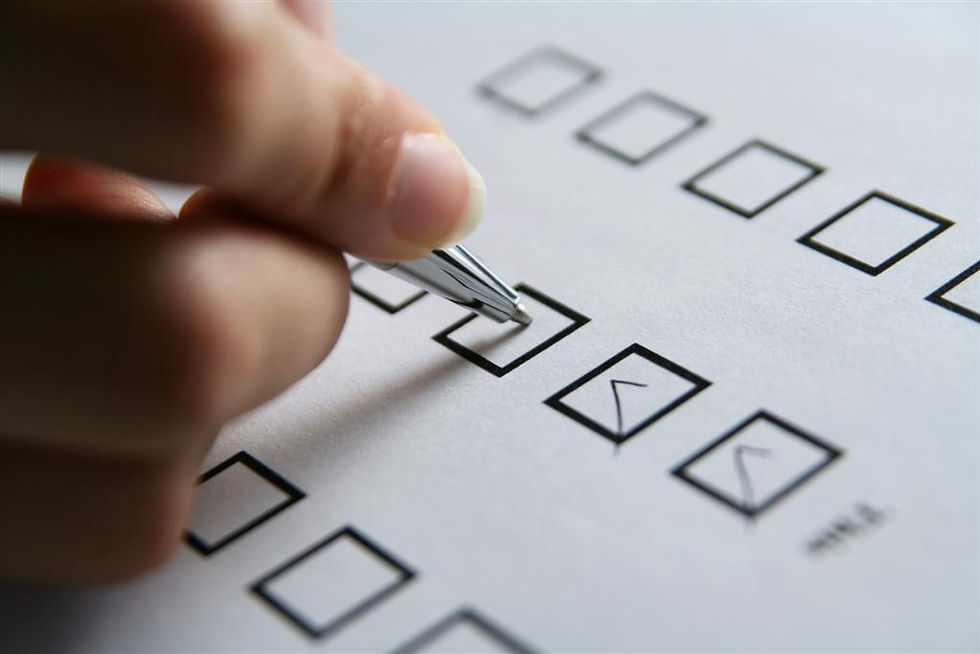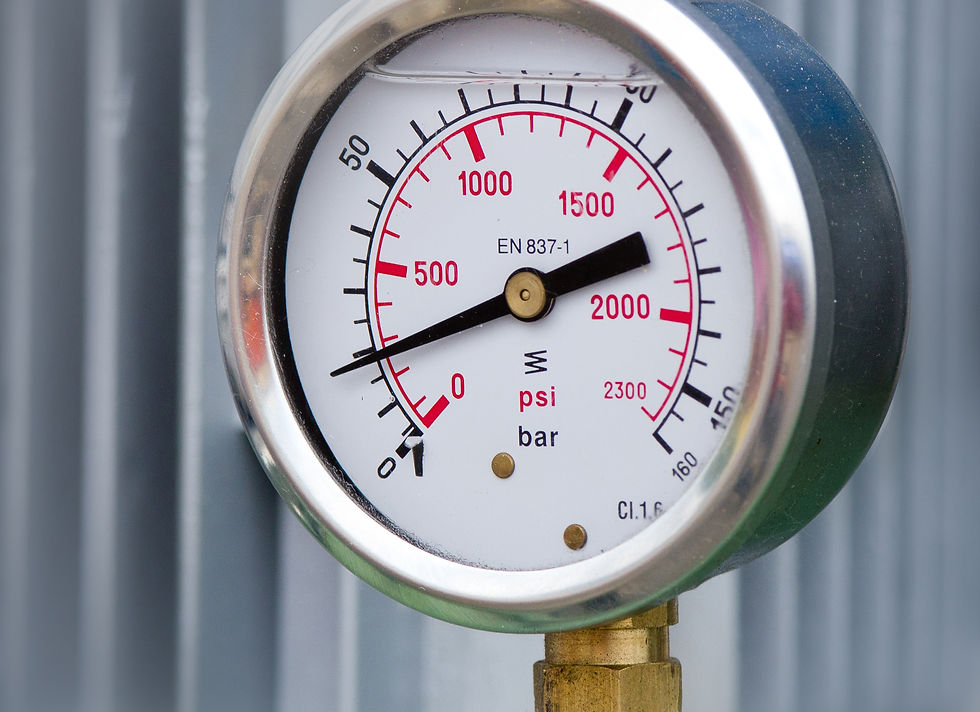6 Ways to Manage Daily Stress
- dazeflowernaturopa
- Oct 24, 2023
- 5 min read

Introduction
Stressful events interrupt our homeostasis, or the physiological balance of our body systems, and are usually caused by events in our environment or from repetitive thoughts about situations we believe to be stressful. Body systems affected by stress include our cardiovascular, musculoskeletal, endocrine, reproductive, respiratory, gastrointestinal, and nervous systems. During stressful periods, the hormones norepinephrine, epinephrine, and adrenaline are released to respond to stress. Many conditions can develop because of long-term stress, such as cardiovascular diseases, hypertension (high blood pressure), anxiety, depression, panic attacks, digestive issues, and fatigue.
Some Signs/Symptoms of Stress
Although this is not a complete list, here are some of the signs and symptoms of stress:
Hair loss
Panic attacks
Weight gain
Fatigue
Trouble sleeping
Headaches
Mood swings
Six ways to help manage stress:
1. Use Ashwagandha (aash·wuh·gaan·duh)
Ashwagandha is an adaptogen, so it helps our bodies adapt to stress by allowing our body to function normally physiologically during times of stress, decreasing our stress response. Ashwagandha is also a nervine, so it nourishes our nervous system. Ashwagandha heavily affects how our brain and nervous system work and improves memory. A few studies show that Ashwagandha manages stress by reducing cortisol levels. (1)
2. Meditation/ Meditation Applications (Apps)
Meditation is a great way to reduce stress as it and other mindfulness practices such as walking, stretching, breathing, etc. can improve stress levels. Studies have shown that mindfulness-based psychological interventions decrease stress in healthy participants and can improve stressful conditions, such as anxiety and depression. (2)

Mindfulness-based therapies can improve the body’s ability to adapt to stressful situations. As technology keeps advancing, using meditation apps makes meditation more convenient. Bostock et al. (2019) observed 341 employees who admitted to experiencing work stress and found that participants who meditated a couple of times a week for eight weeks using a meditation phone application had less stress and better well-being.
Mindfulness meditation also improves mental health, with evidence showing that mindfulness training can improve an individual’s mental and physical recovery from short-term negative stressors. (2)
I enjoy using meditation apps, especially since my life can get pretty busy balancing work, friends and family, and school, making it harder to commit to in-person meditation groups. Also, because my schedule changes weekly and sometimes daily, and in-person meditation sessions are usually consistent, keeping up with meditation groups can be difficult. So, meditation apps allow me to take breaks while working, which is great because I get to recenter and calm down any feelings of worry and stress.
3. Diaphragmatic (dai·uh·fruh·ma·tuhk) Breathing
Though there are limited studies that show how diaphragmatic breathing impacts stress, the research that does exist shows that diaphragmatic breathing helps reduce stress. See the video below for steps on how to breathe using your diaphragm.
Fisioterapia Respiratoria. (2019, 13 June,). Diaphragmatic Breathing [Video]. YouTube. https://www.youtube.com/watch?v=JlHHnSr7prM
4. Use Lavender
Lavender is another herb that acts as a nervine and is also an anxiolytic, so it helps reduce anxiety and nourishes our nervous system. This herb is also known to affect stress levels.
Using lavender for aromatherapy can lower the activity of the sympathetic nervous system. Our sympathetic nervous system is responsible for our fight-or-flight response during stress periods or times of perceived threat.

Lavender, as an essential oil, activates receptors in the olfactory bulb. The olfactory bulb is located in the brain, and receives information about what we smell and sends that information to the limbic system (3). The limbic system is the sensory center in the brain responsible for releasing hormones- enkephalin, endorphins, and serotonin- that provides a sense of relaxation during stressful periods. Ghavami et al. (2022) looked at twenty-one research articles that evaluated the effect of lavender on stress using the Depression, Anxiety, and Stress Scale (DASS-21) and the Perceived Stress Scale (PSS) (Ghavami et al., 2022). Results from their study found that lavender significantly reduces stress and affects on gamma-aminobutyric acid (GABA) (3). Lavender acts specifically on the GABA A receptors and encourages inhibitory tone of the nervous system (4). Inhibitory tone helps us avoid problems related to anxiety, irritability, concentration, sleep, seizures, and depression.
I enjoy placing lavender essential oil in my diffuser before going to bed, and I find that it helps me sleep more deeply and calmly throughout the night with fewer waking disturbances.
5. Set Goals

Disorganization in work, school, or life can lead to a lot of worry and stress. Also, lacking understanding or not having a plan of action to achieve our goals, we can start feeling confused, lost, and sometimes frustrated, which can add to our stress. Setting goals provides us with a direction and a plan for what we are trying to accomplish because it is one way to become or stay organized, and it helps guide us as we work to complete big goals. I find it easier to start with smaller goals, such as daily goals, and then I work towards creating bigger goals, such as monthly goals, yearly goals, and 5- or 10-year plans.
6. Increase Physical Activity
Exercise also positively affects how our bodies respond to stress. Studies show that physical activity lowers cortisol levels (5). Schultchen et al. (2019) performed a study and found that after evaluating fifty-one students, low-to-moderate physical activity every day led to noticeably lower stress levels. Below are physical activity recommendations set by the U.S. Department of Health and Human Services.
3 to 5 years old
-Should be physically active throughout the day
6 to 17 years old
-1 hour of moderate-to-vigorous activity
Adults (typically 18 to 65 years old)
-2 hours and 30 minutes to 5 hours a week of moderate-to-vigorous activity, or
2 hours and 30 minutes a week of vigorous-intensity aerobic physical activity
or
An equivalent combination of both.
Older adults (typically older than 65 years old)
-2 hours and 30 minutes of multicomponent exercise involving balance training, aerobic, and muscle strengthening exercises.

References:
1. Speers, A.B., Cabey, K.A., Soumyanath, A,, Wright, K.M. (2021). Effects of Withania somnifera (Ashwagandha) on Stress and the Stress-Related Neuropsychiatric Disorders Anxiety, Depression, and Insomnia. Current Neuropharmacology. 19. 1468-1495. https://pubmed.ncbi.nlm.nih.gov/34254920/
2. Bostock, S., Crosswell, A.D., Prather, A.A., Steptoe, A. (2019). Mindfulness on-the-go: Effects of a mindfulness meditation app on work stress and well-being. J Occup Health Psychol. 24(1). 127-138. doi:10.1037/ocp0000118.
3. Ghavami, T., Kazeminia, M., Rajati, F. (2022). The effect of lavender on stress in individuals: A systematic review and meta-analysis. Complementary Therapies in Medicine. 68(2022). 1-10. https://www.sciencedirect.com/science/article/pii/S0965229922000346?ref=pdf_download&fr=RR-2&rr=818aad018d892b63
4. Koulivand, P.H., Ghadiri, M.K., Gorji, A. (2013). Lavender and the Nervous System. Evidence-Based Complementary and Alternative Medicine. 2013(681304). 1-10. http://dx.doi.org/10.1155/2013/681304
5. Schultchen, D., Reichenberger, J., Mittl, T., Weh, T.R.M., Smyth, J.M., Blechert, J., Pollatos, O. (2019). Bidirectional relationship of stress and affect with physical activity and healthy eating. British Journal of Health Psychology. 24. 315-333. https://www.ncbi.nlm.nih.gov/pmc/articles/PMC6767465/#:~:text=Higher%20stress%20and%20negative%20affect,well%20as%20more%20positive%20affect.
6. Olson, R.D., Piercy, K.L., Troiano, R.P., Fulton, J.E., Galuska, D.A., Pfohl, S.Y., Vaux-Bjerke, A., Quam, J.B., George, S.M., Sprow, K., Carlson, S.A., Hyde, E.T., Olscamp, K. (2018). Physical Activity Guidelines for Americans. U.S. Department of Health and Human Services. https://health.gov/sites/default/files/2019-09/Physical_Activity_Guidelines_2nd_edition.pdf



Comments